-
Posts
445 -
Joined
-
Last visited
-
Days Won
7
Content Type
Profiles
Forums
Events
Store
Downloads
Gallery
Posts posted by Gordon Sanders
-
-
Thanks very much
Can you list it in either Japanese or Chinese so I can understand the relation?
Hi, Gordon san,
Because Markus is a genius, he considers the meaning of the characters too much difficultly.
The carving on the blade means "There are no shortcut to success" by an English proverb.
This proverb apply to practice of martial art, business and study.
-
Hi all.
First off I need to make to thank everyone for the help so far with my translation of the trigram.
I hope that we are able to decipher the riddle at some point
Any body know a Buddhist priest that sits on top of a hill and is exceptionally wise in ancient Japanese idioms?
That said
I am a Texan living in Hong Kong and had the fortunate privilege of meeting with Unique Japan and Pablo Kuntz over Skype
I went to Tokyo on a vacation for cherry blossoms with my girlfriend and also made an appointment with UJ
I was shown 3 swords and obviously I selected the Kinmichi 3rd gen wakizashi. It was TH and now just passed Yushu! Yeah me!
I had already been working on the furniture for it and had settled on all parts, but------
As luck would have it
A 75cm Rai Kinmichi 2 katana appeared with the above mentioned trigrams
Now I own a kinmichi Daisho and am trying to locate a goto tsuba that matches my existing tsuba.
Thanks for the help and the knowledge.
Ohhhh. If you google my name. "Gordon Sanders" you can get more background on me and my hobbies

Cheers!!!
-
@markus. - if it offends then I do apologize.
@the group - when we are looking at something, such as this inscription, I feel we are all speculating since we do not know the exact circumstances that they are written.
We have 6 characters , 3 make perfect sense as they are well known, the other three are very open to interpretation and how they then tie in to the whole sequence -AND- the sword are why I am reaching out to the group.
Just as in interpreting a sword, or a Mei... There are many opinions, but we all actually do not know for sure :-)
I hope to learn from this group and contribute when I have enough knowledge
Yes I meant Buddhist
RAI KINMICHI Received his title Izumi-no-Kami
in 1689, 2nd Month. A priest, Daihoshi, his
affiliation Hokkyo Rai and Buddhist name: Eisen
-
How often do they publish?
I had a sword (kinmichi wakizashi) receive Yushuto in December and was wondering how long it would be before it is in the book
-
Thanks for that
To add maybe more material for this incredible group...
I had presented this to Markus Sesko (such a huge wealth of knowledge) and he came up with this:
Also keep in mind this sword was made by Rai Kinmichi after he became a Shinto Priest. And the Nagasa has been shortened by a few CM by lengthening the tangLooking online is kind of difficult as the first character (希) means "Greece" in Chinese. But it also means "hope, beg, request, preach" what should IMHO be the context here. The second part, (妙来), is sometimes translated as "wonderful, splendid, magnificent" when consulting Chinese entries. The term does not exist in Japanese. Possible is, that actually Nyorai (如来) is meant, i.e. Tathagata (Buddha).
The other inscription, mubeppô (無別法), comes from the Zen proverb "shinge-mubeppô" (心外無別法) and means "Nothing actually exists outside of your heart" or "Everything that exists and happens only takes places in your heart." But I think you already know that context.
So for the time being, the only interpretation I am able to come up with would be a literal one, that is seeing this inscription as kind of prayer which goes: "There exists nothing but the hope for Tathagata Buddha."
Any opinions?
-
is there a better place to post this?
-
FYI... I have worked with Markus Sesko on the translation, and will share it later. I was thinking that having fresh eyes on it would create a revelation :-)
He was a great help too, very very knowledgeable
-
Thanks Greg... I hope so too
Anyone else have a translation that sounds appropriate for the katana?
希妙来
無別法
-
Thank you very much!
Yes, I am looking for more of a round tsuba, with the waves or clouds, and a dragon.. in a Goto style

-
He is who I have been working with to put it all together. Wish I had a tsuba for the wakizashi that matched the goto tsuba better. I like the gold rimmed tsuba, but want the Daisho to have a better match. What do you think. Do the two tsubas work well together?
-
I am working with Pablo Kuntz on this project, he is building both sayas and tsukas
-
Just added a couple of more pics of the katana
-
Swords were bought shirasaya and the. I compiled the lot! Wakizashi just received yushuto. Waiting on Shinsa result for katana. I believe it will be Tobetsu hozon (sp?)
Plan is to have black tsuka wraps over ray skin and the. The saya will have Black Sea snake at the top 6 inches or so with the rest gloss black.
-
Thanks Greg. Here is a apple cloud album of my pieces
-
 1
1
-
-
Please allow me as well. Thanks
-
-
-
Hi all.
I have a sword that I just purchased and would like you all opinion on the inscriptions on the blade
希妙来
無別法
Sword that has this inscription is on is:
A signed Kinmichi Katana (2nd generation) Edo Period Keian era: 1648-1652 (76.0cm, ubu) Fujishiro Kanteisho Certification
This is a sword by 2nd generation Kinmichi, called Daihoshi Hokkyo Kinmichi (sometimes read Kanemichi).
The cutting edge is a 76.0cm. The was actually longer at one point, and so the cutting edge was slightly shortened to a more manageable length!
The hamon is a choji midare, wavy clove blossoms. Gorgeous.
The sword presently has a rare Fujishiro Kanteisho. Fujishiro was a master sword polisher and became a Living National Treasure.
Thanks very much



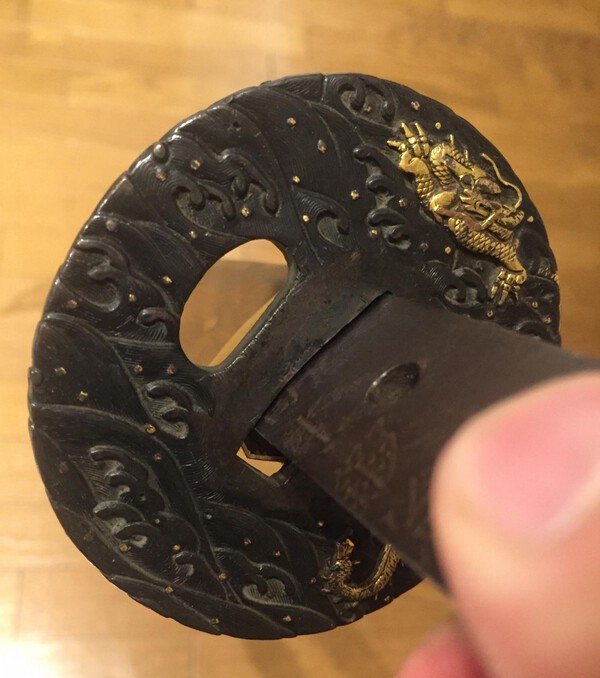
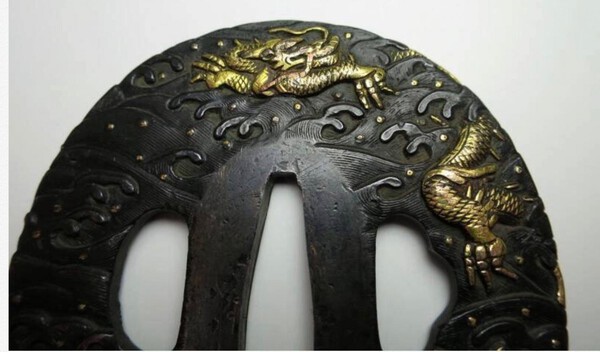
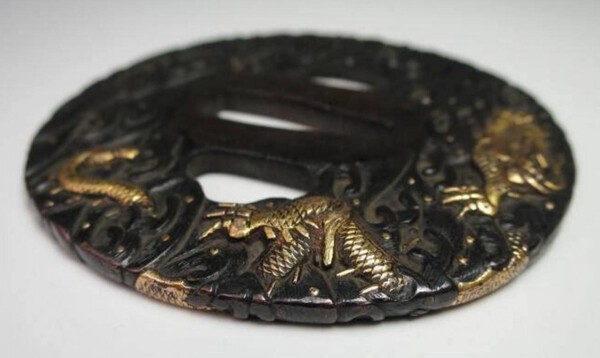
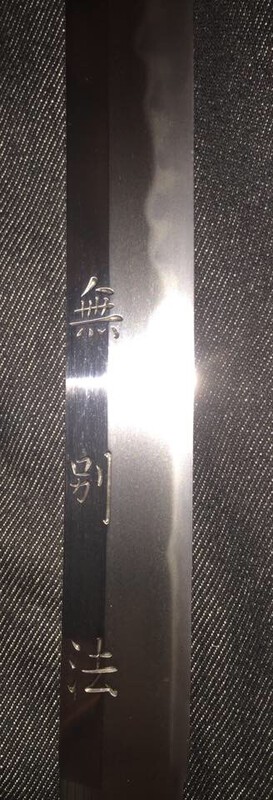
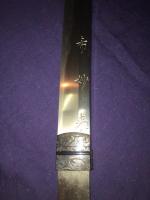
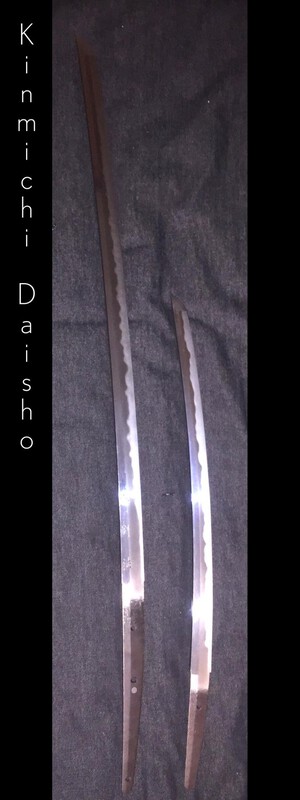
Looking For Matching Tsuba
in Wanted to Buy
Posted
Thanks. L it doesn't have to be round I think... But would love for it to be wakizashi size and have similar look and feel. It is going on a nice kinmichi yushuto blade
Full Daisho set. And existing tsuba that I hope to replace before says and tsuka are built
https://www.icloud.com/sharedalbum/#B0S5qXGF1utDtV